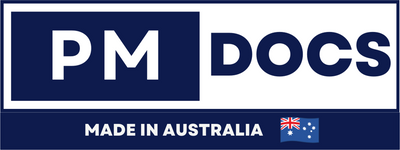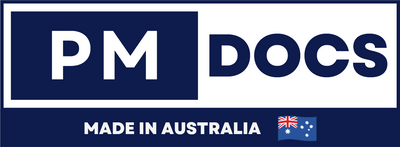What The NIST Cybersecurity Framework 2.0 Means For Australian Businesses
Introduction
In today's digital world, cybersecurity is more important than ever. As businesses and organizations increasingly rely on technology, the need to protect sensitive information and systems from cyber threats becomes paramount. That's where frameworks like the NIST Cybersecurity Framework 2.0 come into play. But what exactly is this framework, and how does it apply to organizations in Australia? Let's dive in and explore.

What Is The NIST Cybersecurity Framework 2.0?
The NIST Cybersecurity Framework 2.0 is a set of guidelines designed to help organizations manage and reduce cybersecurity risks. Developed by the National Institute of Standards and Technology (NIST) in the United States, this framework provides a comprehensive approach to understanding, managing, and improving cybersecurity practices.
Key Components Of The Framework
The framework consists of three main components: the Core, Implementation Tiers, and Profiles.
1. The Core
The Core is a set of cybersecurity activities and outcomes divided into five functions: Identify, Protect, Detect, Respond, and Recover. These functions provide a high-level, strategic view of how an organization should approach cybersecurity.
- Identify: Understand your environment and cybersecurity risks.
- Protect: Develop safeguards to ensure critical services and data are protected.
- Detect: Implement activities to identify cybersecurity events.
- Respond: Plan actions to take when a cybersecurity event is detected.
- Recover: Develop plans to restore capabilities and services after a cybersecurity event.
2. Implementation Tiers
Implementation Tiers help organizations understand how well their current cybersecurity practices align with the framework. The tiers range from Partial (Tier 1) to Adaptive (Tier 4), with each level indicating a higher degree of sophistication and integration of cybersecurity practices.
3. Profiles
Profiles help organizations align their cybersecurity activities with their business requirements, risk tolerance, and resources. They provide a way to prioritize and measure progress toward improving cybersecurity.
Why Is The Framework Important For Australia?
Australia, like many other countries, faces a growing number of cyber threats. The NIST Cybersecurity Framework 2.0 offers a structured approach to managing these risks, making it a valuable tool for Australian organizations.
Benefits Of Implementing The Framework
-
Improved Risk Management: The framework helps organizations understand and prioritize their cybersecurity risks, leading to more effective risk management strategies.
-
Enhanced Communication: By using a common language and set of guidelines, the framework facilitates better communication about cybersecurity issues within and between organizations.
-
Increased Resilience: By following the framework's guidelines, organizations can improve their ability to prevent, detect, and respond to cyber threats, making them more resilient in the face of attacks.
Alignment With Australian Regulations
Australia has its own set of cybersecurity regulations and standards, such as the Australian Cyber Security Centre's (ACSC) Essential Eight and the Information Security Manual (ISM). The NIST Cybersecurity Framework 2.0 complements these standards, providing additional guidance and best practices for managing cybersecurity risks.
How To Implement The NIST Cybersecurity Framework 2.0 In Australia
Implementing the NIST Cybersecurity Framework 2.0 in your organization involves several steps. Here's a simplified guide to help you get started:
Step 1: Assess Your Current Cybersecurity Posture
Begin by evaluating your organization's current cybersecurity practices. This will help you identify gaps and areas for improvement. Consider conducting a risk assessment to better understand your organization's specific threats and vulnerabilities.
Step 2: Develop a Target Profile
Create a target profile that outlines your organization's desired cybersecurity outcomes. This should be based on your business objectives, risk tolerance, and available resources. The target profile will serve as a roadmap for improving your cybersecurity practices.
Step 3: Implement the Framework Core Functions
Use the framework's Core functions (Identify, Protect, Detect, Respond, and Recover) as a guide to develop and implement cybersecurity policies and procedures. This will help ensure your organization is taking a comprehensive approach to managing cybersecurity risks.
Step 4: Evaluate and Adjust Your Implementation Tier
Determine your organization's current Implementation Tier and set a goal for improvement. As you progress through the tiers, your organization will become more adept at managing cybersecurity risks and aligning with best practices.
Step 5: Monitor and Update Your Cybersecurity Practices
Regularly review and update your cybersecurity practices to ensure they remain effective and aligned with your organization's goals. This includes staying informed about new threats, technologies, and best practices.
Real-World Example: Implementing The Framework In An Australian Organization
Consider a mid-sized Australian manufacturing company looking to improve its cybersecurity posture. By adopting the NIST Cybersecurity Framework 2.0, the company can take a more structured approach to managing its cybersecurity risks.
Step 1: Assess Current Cybersecurity Posture
The company conducts a risk assessment to identify its most significant threats and vulnerabilities. This includes evaluating its IT infrastructure, data storage, and access controls.
Step 2: Develop a Target Profile
The company creates a target profile that prioritizes protecting its proprietary data and ensuring the availability of its production systems. This profile guides the development of its cybersecurity policies and procedures.
Step 3: Implement the Framework Core Functions
The company implements the Core functions by developing a comprehensive cybersecurity policy, investing in employee training, and deploying advanced threat detection and response tools.
Step 4: Evaluate and Adjust Implementation Tier
The company evaluates its current Implementation Tier and sets a goal to move from Tier 2 (Risk-Informed) to Tier 3 (Repeatable). This involves refining its cybersecurity processes and incorporating lessons learned from past incidents.
Step 5: Monitor and Update Cybersecurity Practices
The company establishes a process for regularly reviewing and updating its cybersecurity practices, ensuring they remain aligned with its target profile and evolving threats.
Conclusion
The NIST Cybersecurity Framework 2.0 is a valuable tool for Australian organizations looking to improve their cybersecurity posture. By providing a structured approach to managing cybersecurity risks, the framework helps organizations protect their sensitive information and systems from cyber threats. Implementing the framework involves assessing your current cybersecurity practices, developing a target profile, and using the Core functions to guide your efforts. By following these steps and continuously monitoring and updating your practices, your organization can become more resilient in the face of ever-evolving cyber threats.




